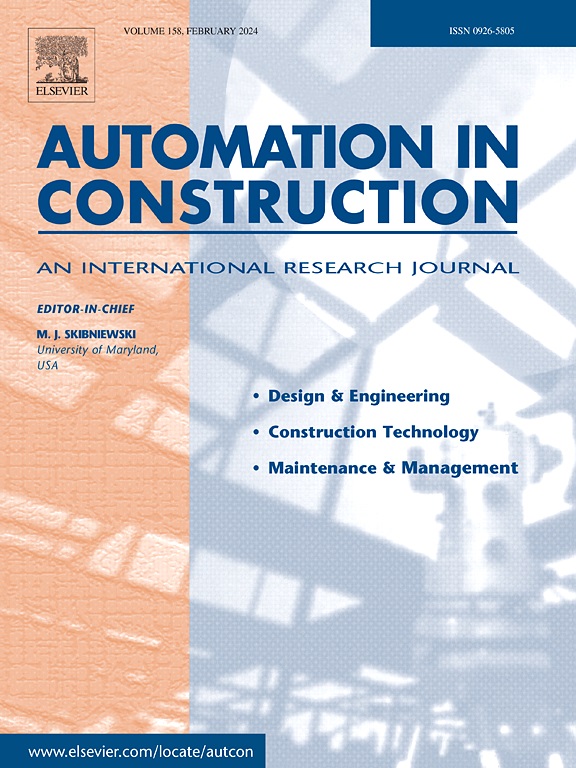Topology-informed deep learning for pavement crack detection: Preserving consistent crack structure and connectivity
IF 9.6
1区 工程技术
Q1 CONSTRUCTION & BUILDING TECHNOLOGY
引用次数: 0
Abstract
This paper addresses the challenge of crack detection, where incorrect connections often distort crack topology. By leveraging topology theory, which focuses on properties that remain invariant under continuous transformations, the goal is to preserve key geometric features like connectivity and loops. For future-oriented road maintenance, fine segmentation that preserves the topological integrity of crack structures is essential for efficient automated repairs and crack characterization. To this end, the research combines persistent homology (pH) with the U-Net architecture enhanced by the Vmamba model, forming TopoM-CrackNet. TopoM-CrackNet outperforms other topology-preserving methods, such as Topoloss, with a Betti number of 4.032. It also achieves a mean Intersection over Union (mIoU) of 0.727, surpassing traditional methods like nnUnet and Segformer, and is nearly twice as fast. Overall, the key contribution is its ability to significantly improve crack topology preservation during segmentation, offering technical support for crack detection and automatic repair.
基于拓扑的路面裂缝检测深度学习:保持一致的裂缝结构和连通性
在裂纹检测中,不正确的连接往往会扭曲裂纹拓扑结构,而本文正是要解决这一难题。拓扑理论侧重于在连续变换下保持不变的属性,通过利用拓扑理论,本文的目标是保留关键的几何特征,如连通性和循环。对于面向未来的道路维护而言,保留裂缝结构拓扑完整性的精细分割对于高效的自动修复和裂缝特征描述至关重要。为此,该研究将持久同源性(pH)与经 Vmamba 模型增强的 U-Net 架构相结合,形成了 TopoM-CrackNet。TopoM-CrackNet 的贝蒂数为 4.032,优于 Topoloss 等其他拓扑保留方法。它还实现了 0.727 的平均联合交集 (mIoU),超过了 nnUnet 和 Segformer 等传统方法,速度也快了近一倍。总体而言,它的主要贡献在于能够在分割过程中显著改善裂纹拓扑结构的保存,为裂纹检测和自动修复提供技术支持。
本文章由计算机程序翻译,如有差异,请以英文原文为准。
求助全文
约1分钟内获得全文
求助全文
来源期刊

Automation in Construction
工程技术-工程:土木
CiteScore
19.20
自引率
16.50%
发文量
563
审稿时长
8.5 months
期刊介绍:
Automation in Construction is an international journal that focuses on publishing original research papers related to the use of Information Technologies in various aspects of the construction industry. The journal covers topics such as design, engineering, construction technologies, and the maintenance and management of constructed facilities.
The scope of Automation in Construction is extensive and covers all stages of the construction life cycle. This includes initial planning and design, construction of the facility, operation and maintenance, as well as the eventual dismantling and recycling of buildings and engineering structures.
 求助内容:
求助内容: 应助结果提醒方式:
应助结果提醒方式:


